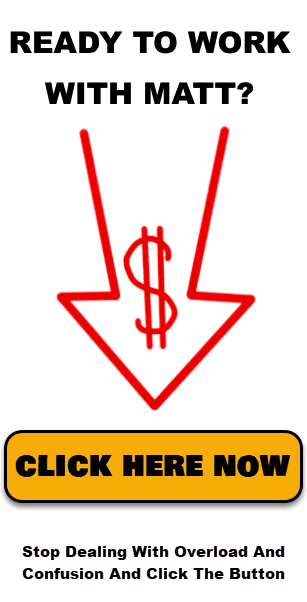Is The Selling Family a Scam – Review
Amazon FBA (Fulfillment by Amazon) is enticing for entrepreneurs and side hustlers with its promise of financial freedom and flexibility. Among the success stories in this space is The Selling Family, led by Jessica and Cliff Larrew, who turned a side hustle into a thriving full-time business.
The Selling Family’s Journey
Jessica and Cliff’s journey into Amazon FBA began modestly, with Jessica selling used textbooks. However, realizing the potential in retail arbitrage soon led them to take a bold step. In November 2011, Cliff quit his corporate job, which propelled them into a new realm of success. By their first full year working together, they achieved an impressive $300,000 in sales, with profits exceeding $100,000. Today, while their educational endeavors have taken center stage, they continue to engage actively in Amazon FBA, striking a balance between teaching and selling.
What is Amazon FBA?
Amazon FBA stands for “Fulfillment by Amazon,” and it allows sellers to leverage Amazon’s extensive distribution network and customer base to sell their products. Here’s a breakdown of how it works:
- Product Sourcing: Sellers find products to sell. This can be their products, wholesale products, or products sourced through retail arbitrage (buying products from retail and reselling on Amazon).
- Sending Inventory to Amazon: Once the seller has their products, they send them to one of Amazon’s fulfillment centers. Amazon guides on how to prepare and ship the inventory.
- Storage in Amazon’s Warehouses: Amazon stores the seller’s inventory in their vast network of fulfillment centers. This means the seller doesn’t need to have their own storage space for their products.
- Listing Products on Amazon.com: Sellers list their products on Amazon.com. They set the prices and manage their product listings through the Amazon Seller Central interface.
- Order Fulfillment by Amazon: When a customer orders the product, Amazon fulfills the entire process. They pick it, pack it, and ship the product to the customer.
- Customer Service and Returns: Amazon also handles customer service and returns for FBA items. This includes fielding questions from customers and processing returns and refunds.
- Payment Processing: Amazon collects the payment from the customer, deducts the relevant fees, and then pays the remaining balance to the seller. Amazon FBA fees include storage fees (based on the space the products take up in the warehouse) and fulfillment fees (based on the size and weight of the product).
Educational Offerings by The Selling Family
Recognizing a gap in structured learning for Amazon FBA, The Selling Family developed their flagship course, Amazon Boot Camp. This comprehensive program covers the A-Z of Amazon FBA, from setting up an account to mastering retail arbitrage. Additionally, their All Access Vault offers extensive resources, including group coaching and a library of training materials. A key component of their program is the supportive community, particularly evident in their active Facebook group, which provides a platform for learners to share experiences and seek advice.
Keys to Success in Amazon FBA
Through their own experiences, The Selling Family emphasizes the importance of planning and understanding the intricacies of Amazon FBA. They caution new sellers against common pitfalls, such as overstocking inventory or giving up too soon. Their journey underscores the importance of treating Amazon FBA as a serious business.
Free Alternatives for Learning Amazon FBA
While paid courses offer structured learning, free resources like YouTube also provide information on Amazon FBA. YouTube channels can be a treasure trove of tips, strategies, and insights, catering to both beginners and advanced sellers. However, the quality and reliability of free content can vary, and users must discern the credible from the less so.
| Learning Resource | Pros | Cons | Examples |
|---|---|---|---|
| Books | In-depth, comprehensive coverage of topics | May not be up-to-date with latest trends | ‘The Everything Store’ by Brad Stone, ‘Amazon FBA’ by Frank Aaron Florence |
| YouTube | Free, diverse content; visual learning | Variable quality; can be overwhelming | Channels like ‘Jungle Scout’, ‘The Amazing Seller’ |
| Online Forums | Community support; real-time advice | Information can be unverified or biased | Reddit’s r/FulfillmentByAmazon, Warrior Forum |
| Blogs | Regular updates; personal insights | Requires sorting through a lot of content | Blogs like ‘The Selling Family’, ‘MyWifeQuitHerJob.com’ |
| Podcasts | Convenient, can listen on-the-go | Not visual; may not cover all topics in depth | Podcasts like ‘Smart Passive Income’, ‘The Amazing Seller Podcast’ |
| Webinars | Interactive; often include Q&A sessions | Time-bound; may not fit everyone’s schedule | Webinars hosted by experts or Amazon itself |
Comparison: Paid Courses vs. Free Resources
Choosing paid courses like Amazon Boot Camp and free resources like YouTube often refers to individual preferences and learning styles. Paid courses offer structured learning, mentorship, and community support, which can be crucial for some learners. On the other hand, self-motivated individuals might find the diverse and expansive content on YouTube more appealing, especially when on a tight budget.
Conclusion
Whether opting for the structured pathway offered by The Selling Family or exploring the vast resources available for free on platforms like YouTube, success in Amazon FBA requires dedication, strategic planning, and continuous learning. Each learning path has its unique advantages, and the right choice varies based on personal learning preferences and goals.
